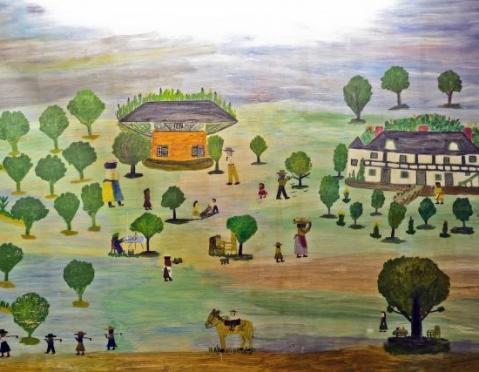
Born two decades after the Civil War and granddaughter to a slave, Clementine Hunter is perhaps Melrose Plantation's most interesting tenant. Hunter worked as a field hand in her early years at the plantation, then as a cook in the plantation's big house.
Hunter was a self-taught artist. She painted on anything she could find, including cardboard boxes, the inside of soap cartons, brown paper bags, pieces of wood, and window shades. At first, her primary source of paint was discarded tube from various artists who had worked at Melrose as a guest of Miss Cammie.
Hunter is known as being an important social and cultural historian, as her paintings document everyday plantation life, showcasing such activities as picking cotton, washing clothes, baptisms, and more.
In 1955, at the age of 68, Hunter painted the top floor of the African House (an outbuilding of Melrose Plantation) during a three-month period. The painting consisted of nine large panels and several small connecting panels which encircled the room and depicted the story of the Cane River country.
Northwestern State University granted Hunter an honorary Doctor of Fine Arts in 1986, two years before she passed away.













